What are the most common screenwriting mistakes that a screenwriter will likely make? What mistakes will be all too familiar to screenplay readers and development executives? Some mistakes are forgivable and some less so. But either way, there are screenplay mistakes that will make readers roll their eyes with their familiarity.
So what are these crucial screenwriting mistakes to avoid both for new and experienced screenwriters? And what are the mistakes that will only get in your way? We take a look.
Table of Contents
- 1. Being Unprepared
- 2. Incorrect Format
- 3. A Lack of Motivation
- 4. Incorrect Information or Research
- 5. An Inappropriate Length
- 6. Having Too Many Characters
- 7. Characters With a Lack of Motivation
- 8. Changing Character Names
- 9. Having Characters Without an Inner Struggle
- 10. Adding Too Much Description
- 11. Using Clichés and Tropes
- 12. Having a Weak Conflict
- 13. Writing Non-Visual Character Traits
- 14. Revealing Too Much Via Exposition
- 15. Changing Your Mind Halfway Through
- 16. Adding Unnecessary or Badly Structured Scenes
- 17. Writing in Just One Go
- 18. Writing One Single Draft
- 19. Bad Grammar
- 20. Giving Up
1. Being Unprepared
The very first common screenwriting mistake is not having a plan. A writer who writes unprepared will likely have a frustrating experience.
Being unprepared is, for example, starting to write the script for an idea without knowing what the inciting incident will be. Or it could be not knowing how many characters you will need. Not knowing these elements are going to complicate the process enormously, leaving you fumbling in the dark for each piece of your story.
Being prepared allows one to write more fluently. With a more solid roadmap, there is more room for experimentation. Give yourself a solid structure and you can play with the rules and see where your writing might take you within that structure.
Whilst some writers might like to extol the virtues of free writing, such a skill is incredibly hard to master. And it’s likely that those who succeed with this method will have a structure embedded in their brain somewhere. So to avoid writing a screenplay that feels unfocused or will need a lot of rewriting, try and give yourself as much of a plan as you can.
2. Incorrect Format

Another mistake that often occurs is not knowing how to write in the correct screenplay format. For instance, a lot of first-time screenwriters may write their scripts like a novel due to not being familiar with the correct format.
So, in order to avoid realizing that the entire format is wrong when it’s too late, you should have an idea as to how a screenplay actually looks. It’s pretty simple to learn the correct formatting technique. Screenwriting books will teach you the basics whilst the best screenwriting software will lay out a pretty foolproof base for you to write within.
A familiarity with screenplays will also help you to know what you’re getting into, allowing you to be familiar with the technical language you are telling your story with.
3. A Lack of Motivation
Writing a story that does not interest nor motivate you is probably one of the worst mistakes a screenwriter can make. The point of a film is to captivate the audience and make them care about what they are watching. So if you as the screenwriter don’t care for the story or find a lack of interest in it how can the audience be interested in the movie?
In most cases, you won’t even finish the script if you start writing about an idea that does not excite you enough. Therefore, do not attempt to write about something that does not feel right to you. The chances are that if you don’t like what you are writing others won’t either.
Find a connection to the source material, whether that’s direct or indirect. It may trigger something in you to do with your own life, experiences or interests. Or it may be more directly linked to your personal experiences (such as a semi-biographical story). Whatever the connection, there should be something in the story that both excites you and that you feel that you are primed (perhaps even the best person) to tell.

4. Incorrect Information or Research
Another common screenwriting mistake that can happen is not doing the appropriate research on the topic you write about. For instance, you might want to write a script where the plot occurs during the second world war. But if you don’t do any research as to how people lived during that period then the story will likely have faults and inaccuracies that could undermine the story.
A bit of inaccuracy – what we can call artistic licence – is expected in films due to the need to dramatize the plot. However, writing a story set during a certain time period with a complete disregard for how things worked during that era is not what you want.
A fitting example of this is the movie Inglorious Basterds. The script has inaccuracies due to having fictional characters and events that never occurred. It’s a piece of historical fiction. Nevertheless, period details are accurately depicted and the world itself feels true to the era it’s depicting.
The research is about finding the middle ground between a dramatic film and an accurate depiction of real-life events. You won’t be able to capture everything accurately. And inevitably your own perspective on a time period you never lived through will contain liberties. But proper research and information are important in order to ground the story in the real world, even if there are small departures from the facts.

5. An Inappropriate Length
This common screenwriting mistake often occurs when you have a time limit as to how much screen time your script can take up.
Attempting to cram an idea that needs a lot of time to be developed into a 10-minute script is not going to work. You might love the concept you came up with. However, you need to know how to create a narrative with a good flow that starts and finishes in the time that you are given.
This also goes the other way around. If you stretch an idea out to fill as many pages as you can, you will be left with a long film that bores audiences due to not having enough creative material to compel them to keep watching. Know how much material you have and how long it will take to develop it.
A script that is below or above the standard length (90 – 120 for a feature/30 – 60 for a pilot/5-25 for a short) will likely raise eyebrows for those reading it. If you’re going to go outside of these norms, you must make sure that the story justifies it. Otherwise, the script will feel either too light or too baggy.
6. Having Too Many Characters
Furthermore, a common mistake that you can make is to have the temptation of having too many characters. Every character that you create for your story needs to have energy and purpose. They need to create conflict, move the narrative forward and/or help provide information for the purpose of the plot.
Therefore, creating too many characters can result in pointless roles that do not add anything to the plot or that add one thing and then turn irrelevant. Instead of doing that you should try to create fewer characters whose presences matter.
A great example of the right amount of characters is the film 12 Angry Men. Here you have many characters (the clue is in the title). But when you think about them, they all add something important and distinct to the story. Each of them reveals relevant information and/or acts as a force that opposes the main character’s goal.
This is what each character must do; bear relevance and importance to the protagonist and/or main storyline. So if you introduce a character, you must make them mean something rather than let them fade into the distance.

7. Characters With a Lack of Motivation
On the other hand, another important aspect of the character that all writers might oversee is the motivation they need to have. A character, as mentioned above, is all about energy and purpose. If your protagonist does not have anything that drives them enough to justify their actions the plot won’t be believable. Additionally, this will make the audience disinterested.
Your protagonist needs to have a dramatic want, a specific desire, that they pursue. Thanks to this motivation the entire story can unfold. So, if you create a character whose purpose is unclear or lacks strength then that will create a weak story.
The audience may be grabbed by other elements (such as suspense, mystery or other characters/storylines). However, by the end, without a protagonist‘s motivation, the story’s overall purpose will soften. To avoid this common mistake, try to start writing about characters with a specific and straightforward goal.
For instance, in Taken the protagonist‘s goal is to recover his abducted daughter. Such a clear motivation makes it easier for first-time writers to understand how a character’s desire is directly linked with how the story unfolds. It may be a simple motivation but it’s an effective one nonetheless.
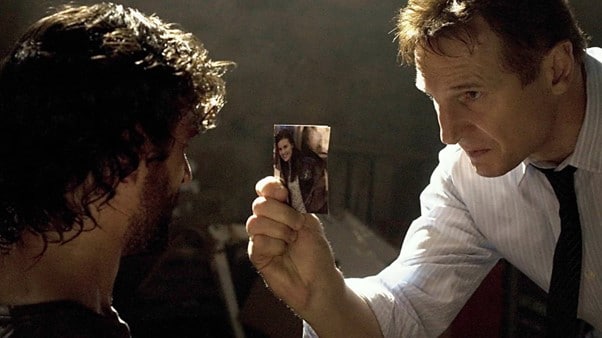
8. Changing Character Names
The screenplay isn’t there to just deliver the plot, it must also provide information for other crew members. Your script is a method of communication with other departments like art, photography, lighting, etc. So, you must write in a clear way to not generate confusion.
One way of doing this is by sticking to one name for each character. For example, you should avoid starting your script by naming a character “Mysterious Man” and then changing it to another name. The reason for this is that it will create confusion as to how many characters are in your script. Therefore, it creates uncertainty as to how many actors will be needed. So, try where possible, to choose one name and don’t change it.
This is all about legibility and clarity in your script. Whilst you may think it’s dramatically effective to withhold a name, the script is ultimately about communicating your vision as clearly as possible. There may be other more dynamic and visual ways to hide a character’s identity, for example. So try not to rely on the simplest option if trying to create such mystery.
9. Having Characters Without an Inner Struggle
An inner struggle – known commonly as internal conflict – is what creates three-dimensional characters. Since this type of struggle that a protagonist goes through is less visible than the goal that they pursue it might be easier to overlook. But creating a good internal conflict will provide your script with depth and will make the character more relatable.
A clear example of this can be seen in The Godfather. Al Pacino’s character, Michael Corleone, must step up to be the head of his family and the mafia. However, he does not want to be part of that. This thus creates an inner struggle between what he wants and his obligations. His external desires battle against his inner ones, pulling him in different directions and thus creating conflict, both within himself and with others.
Conflict is the route of all good drama. But sometimes the richest, most interesting conflict comes from within. And so to create a complex character, one who will prompt interesting drama, you must create an internal struggle for them to grapple with.
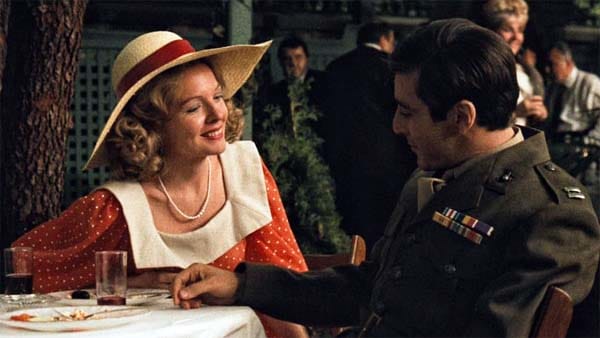
10. Adding Too Much Description
As mentioned above, a common screenplay mistake is not knowing how to format a script. Many may think other forms of writing are analogous to writing a screenplay. But a script does not need as much description.
The description should tell the reader the character’s action, a short overview of new characters when they are introduced, the setting/context set-up, and important details that add to the plot. Adding too much description will only limit the creative decision other departments can make. So, if the description does not add anything to how the story will look and feel on-screen, then it is better not to include it.
Description can wonderfully illuminate the world you are creating. But there is a fine line to tread between illustrating the story world and showing off the skill and proficiency of your writing style. In general, a good rule to stick to is to only write what can be visually represented. There is some freedom within this, as what can be seen or represented visually can sometimes be up for debate. But using this rule as a guide will at least help in keeping your description in check.
11. Using Clichés and Tropes
Another common screenwriting mistake is making too much use of cinematic clichés. Clichés or tropes can help move the narrative forward in an easy way that usually works. They can get you out of a hole or help you break through writer’s block. Using one cliché in your script is not so bad. But having to rely on them is where the issue lies.
For instance, in most horror movies, such as Paranormal Activity, you have the cliché of the characters not following advice to stop the paranormal activity from happening. Even though this is an overused element in the film, in this case, it is necessary to move the plot along. However, if the film contained more clichés than this one then it would not work out as well as it does. The cliché is ultimately offset by the fact that the film is innovative in other ways.
So, use classical conventions because they work in terms of the mechanics of your story. But don’t rely on them. Furthermore, a knowledge of what these clichés and tropes are is essential to understanding how to use or not use them. So try and accommodate yourself with what these clichés and tropes are generally accepted to be.
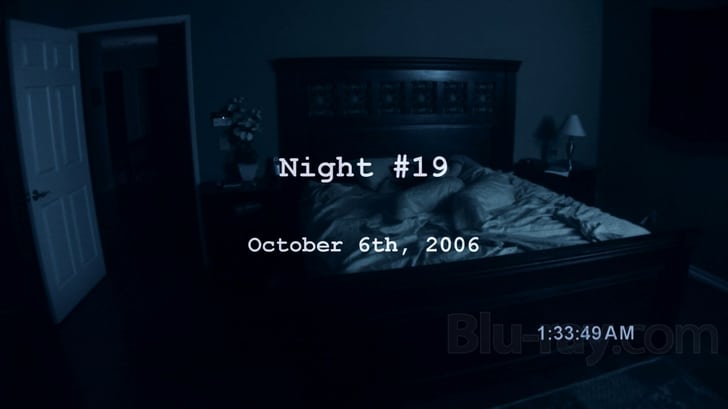
12. Having a Weak Conflict
Similarly to not having a character with a dramatic want that moves the plot, another common screenwriting mistake is not having a conflict that is strong enough. The conflict, or inciting incident, is what truly starts the journey the viewer will be involved in. The actions, obstacles, and resolution that the film requires are born from the inciting incident. So, if the conflict doesn’t provide enough content, the rest of the narrative won’t be able to develop itself further.
A good example of this comes in Jaws.
- The inciting incident is the shark attack that kills a woman on a summer day. This is a very clear and strong conflict that allows the plot to unfold into the epic hunt for that shark.
- However, what would have happened if the inciting incident was weaker? Let’s say, a shark was spotted in the distance and people were just worried. The actions would not have been able to unfold as they did.
- With such a weak inciting incident there would have been no reason for the protagonist to go on such a big and dangerous mission to hunt down a shark.
So, as you can see, the conflict must be strong to allow the narrative to advance with logic. Otherwise, the audience will question the protagonist‘s motivation and the stakes that are needed to provide drama, tension and action.
13. Writing Non-Visual Character Traits
We’ve spoken about writing description that isn’t visual enough. And another common screenwriting mistake that can happen is writing non-visual elements into the screenplay when it comes to the character moving through the story.
This can happen due to not knowing how else to show what a character is feeling. You need to remember the rule of what can’t be seen on the screen should not be written in the script. Any feelings or thoughts that the character has need to be shown through the actions they take.
An effective way of portraying a character’s emotions, for example, is via their facial expressions or their physical movements. What the characters do will reveal their thoughts and feelings in a cinematic way. We won’t know what is going through their head (unless there is voiceover). But we can get a glimpse of what is driving them through the actions they take.
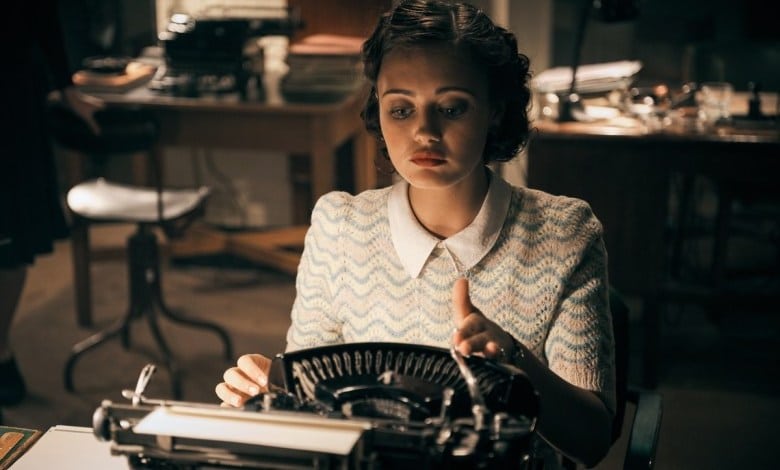
14. Revealing Too Much Via Exposition
If you are familiar with how a script is structured, then you will know that most scripts are composed of a three-act structure. The first act is where the setting and characters as well as the inciting incident are presented. This way the audience can familiarize themselves with the basics of the plot.
However, it can be tempting to add too much information into this part of the film. This is a common screenwriting mistake that can happen to many new writers.
Over-explaining the plot in the first act due to the fear of the audience not understanding what is happening can be hard to resist. But you need to trust both in your abilities as a writer to reveal information subtly and the audience’s capability to understand.
Exposition is a mistake likely to signal that you are a new or amateur writer. You must cut back on dialogue that explicitly reveals information to the audience and instead reveal information through dramatic, cinematic means. This, ultimately, is what makes for compelling drama and cinema.
15. Changing Your Mind Halfway Through
Inspiration strikes at the weirdest of times and new ideas pop up when you already have another idea in mind. This can sometimes make it difficult to choose which one to focus on. The problem with this is that it might seem that a new idea appears halfway through a script.
Naturally, you might want to incorporate this new idea into your script. Nevertheless, this can lead to problems such as having the first half of the screenplay be focused around one concept and the other around another one. If the idea you want to include flows with the plot you already have then that would not be a problem. But having a completely new, unrelated plot and wanting to add that to an already existing script will result in confusion.
The best thing you can do in that situation is to note the idea down and use it for a separate script. Don’t overstuff your screenplay with too many ideas, concepts, storylines and characters. Instead, keep it simple, finding one great idea and following it through to its full potential.

16. Adding Unnecessary or Badly Structured Scenes
Similar to the common screenwriting mistake of adding too much description, many writers are tempted to add unnecessary scenes that over-explain the plot. To avoid this error the same advice applies as above; you should clarify what each scene adds to the plot.
Does the scene reveal relevant information? Can it create a deeper understanding of the characters? Does it introduce us to a new key scene?
If the answer is no to all those questions then the scene is not necessary and will just take up screen time. It will potentially disorientate your audience and leave them puzzled as to the purpose of what they have just watched. More importantly, it undermines your authority as a storyteller.
A good practice to be able to identify useful scenes is to watch movies and analyze why each scene is there. How does it move the story forward? How would the story not work without it? Every scene must be there for a reason.
Moreover, does your scene perhaps go on for too long? Or is it not long enough? Another key part of giving each scene a purpose is making sure it’s the right length for what it needs to achieve. A good rule to follow for this is the get in late, get out early rule. This will mean you’re entering and leaving the scene at the appropriate time for the information you need to convey. And this, in turn, will cut out unnecessary time added to or subtracted from your scene.

17. Writing in Just One Go
Another surprising common screenwriting mistake is trying to write a script in one go. Screenwriters will often have the excitement of being inspired by an idea and will want to get it all on paper as soon as possible to see the finished product.
And, even though this can sometimes result in a good script, most times it might cause a writer to burn out before they get to finish the screenplay. Furthermore, attempting to write all your scripts in one sitting can make the process feel like a chore rather than a gratifying activity.
The more recommendable route is to take your time to write. Write for a few hours every day and then take a break to reflect on what you’ve written. Don’t write as if you have a deadline to meet with your script. Writing a script shouldn’t feel like an obligation. Such pressure can stifle creativity and a fresh approach. So try not to put pressure on yourself to write it in a limited amount of time.
Every writer is different and some thrive under a deadline. However, you want to still make sure you have the time to fully comprehend the story you’re writing and do it the best justice that it deserves. Otherwise, you may well be writing a script that is only half of its potential.
18. Writing One Single Draft
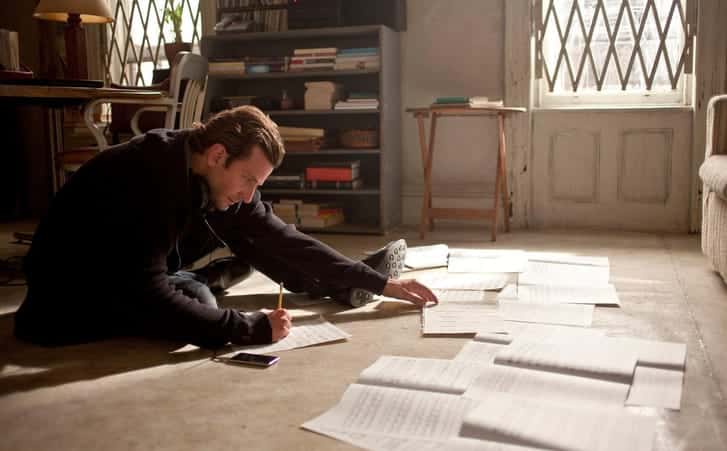
Just like you should not write everything in one go, you should also attempt to not rely on only one draft during your scriptwriting process. It is a common screenwriting mistake to be tempted to write one draft and be done with it. But most, if not all, scripts will need multiple drafts.
The redrafting process will allow you to spot mistakes more easily and see the flow of the narrative more clearly. Moreover, this is the simplest way to identify how much of the script you like and what you want to change. If you don’t feel like rewriting an entire 120-page-long script then try to at least rewrite the parts that make you feel unsure. This practice is time-consuming but worth it in the end.
Writing a screenplay can be an exhaustive process. But the real writing often only begins once that first draft is completed.
19. Bad Grammar
This common mistake is pretty obvious. However, given that lots of people forget about it, it is worth focusing in on when finalizing your script. You might have the most perfect script with the most original idea. However, if the grammar is wrong then the script will look unprofessional.
The good thing about this easy-to-make mistake is that it is also simple to fix. Just remember to reread your script or use websites that point out and fix your mistakes. Fixing grammar errors only takes a few minutes but can make a big difference to the final outcome.
It’s not just that people will necessarily pull you up on bad grammar, but more that poor grammar can be an indication of an off-putting carelessness.
20. Giving Up

This is a screenwriting mistake that most writers will likely be tempted to commit at some point. When ideas are running low, or the original inspiration starts to go away then the urge to leave the script unfinished can sneak up on you.
However, don’t give up so easily. Try, for example, instead to take a break from your script. Get inspiration from your daily activities or reread your script to see where you got stuck. Not finishing your script should be a last resort when nothing fits in or when you stop liking what you created.
Some writers even talk of putting down an idea for many years before coming back to it with sudden, new inspiration. You never know what might change your perspective on the screenplay or idea at hand.
It is completely normal to not have constant inspiration or to need a break from writing. So, take that time off to avoid making the mistake of abandoning a screenplay that has the potential of being fantastic.
Keep Writing
In general, giving up is a tempting thing to do for a writer. And it’s especially tempting when screenwriting mistakes are made or feel like a significant barrier to you telling the story you want to. However, you must keep going.
Making all these screenwriting mistakes as a writer is completely normal, that’s why they are common. Thankfully, there are many ways to avoid making them. For each of these mistakes, there is a specific way that they can be prevented.
At the end of the day, the best way to improve your writing is via practice. And the best way of fixing mistakes is by making them in the first place. So keep writing, keep improving and keep making mistakes.
- What did you think of this article? Share It, Like It, give it a rating, and let us know your thoughts in the comments box further down…
- Struggling with a screenplay or book? Story analysis is what we do, all day, everyday… check out our range of services for writers & filmmakers here.
This article was written by Valentina Vlasich and edited by IS Staff.
Get *ALL* our FREE Resources
Tackle the trickiest areas of screenwriting with our exclusive eBooks. Get all our FREE resources when you join 60,000 filmmakers on our mailing list!

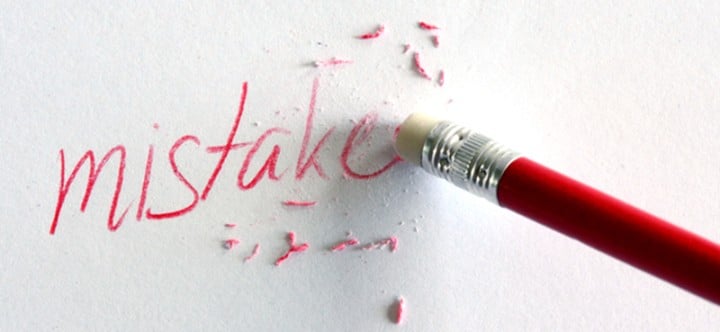
What about someone like me who never had a screenplay before wants to badly i had a scene in a film never paid i thought i good at that. Where do i start in action. i watch films saw scream they cut away from casey killer keeps guessing who it is. still dont know when in mask again at sydneys door i had suspion. it was billy in mask sydneys door. Father must b in other when billy in bedroom with her. What should i start with it science fiction. give me lines that reflect want to have area 51 in it gov uk bio weapon as premise that area 51 is actually using it loads think gov is using bio weapon. It making people turn from normal self to what aliens want
When depicting a true scenario.
Via script.
What are the options with regards to condensing the storyline to fit a 90 to 120 minute format.
If indeed that requires omitting pertinent scenes and info which accurately tell the course of events
and deem to be integral to the storylines flow and introduction of
Golden insights into the forward motion of the plot.
How can you cookie cutter it .
Or what are the other options if the scripts natural length is beyond the modern movie format
Should it be considered for a series or something of that nature.
I thought this was clear , well written and very helpful information for a new script writer , I have printed it off and will refer to it regularly . Thank you
Most welcome Clive, glad we could help you!
It would have been much more helpful if the examples given for each mistake were of the type of mistake described.